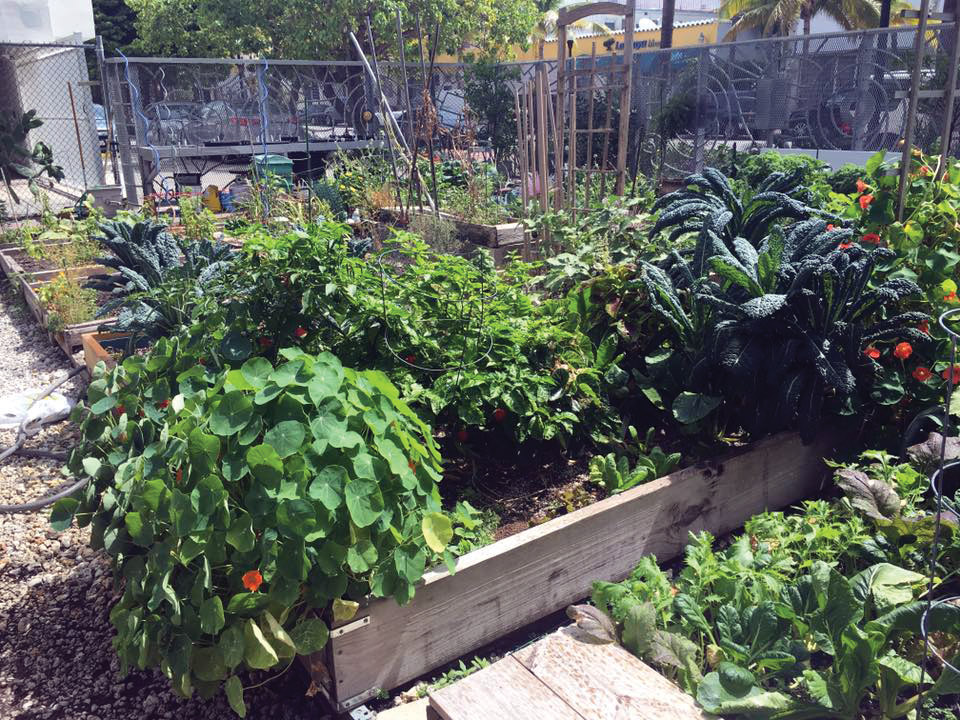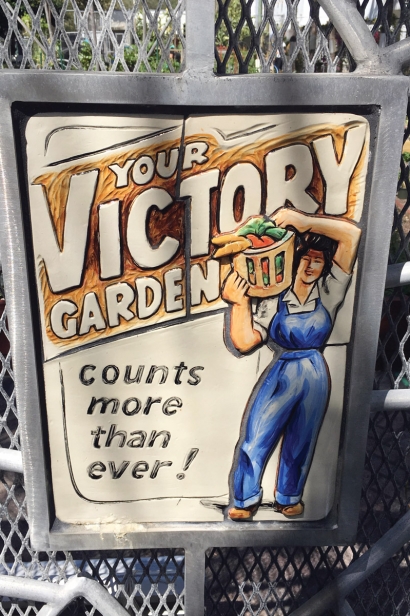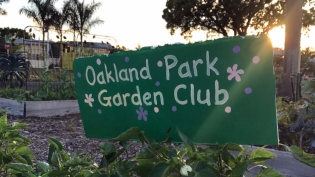No Yard? No Problem! Join a Community Garden
Tucked away in abandoned lots, church lawns and parks across South Florida are patches of green where tomato plants, spicy peppers and fragrant herbs flourish. “It’s a little piece of paradise in the middle of a crazy city, that’s busy, full of tourists and under construction,” says Laura Lafata, who has been growing food on a plot in South Beach’s Joseph J. Villari Victory Garden for six years.
Community gardens are not a new phenomenon. The last peak of the community gardening movement was in the mid-1940s, when “victory gardens” sprung up around the nation to supplement food supplies during World War II. Today, they are simply anywhere people grow plants together, urban or rural, vegetables or flowers, individual plots or a communal lot. To suit the needs of their community, they can be supported by not-for-profits, municipal governments, private businesses or religious organizations.
In dense urban environments like South Beach where residents live primarily in apartment buildings or on small lots, a community garden is one of the only ways people can grow food, and they’re generally made up of individual plots for personal use. Community gardening can be motivated by social, philanthropic or educational needs. Some don’t have personal plots, and the produce can be donated, sold or shared among all volunteers. Little Haiti Community Garden is structured this way, with a communal urban farm where individual volunteers or groups are welcome to tend to the plants. In Dania Beach, a piece of unused urban land was converted into a farm and market after residents told the city’s Community Redevelopment Agency they’d like to see a community garden. Today, the PATCH – People’s Access to Community Horticulture – is a market garden, run by locals, creating jobs as well as providing fresh produce in what was considered a food desert.
Save Money on Food
Community gardening can help offset food costs. A study of neighborhood gardens in San José, California, found that each gardener saved an average of $435 on groceries per year. “I definitely save money,” says Lafata. “I was going to the farmers market probably every weekend. I don’t go nearly as much.” There may be health benefits, in addition to those that come with eating fresh produce, from spending time outdoors in the garden and socializing. Urban community gardeners were found to have better overall wellness because of regular interaction with nature and sense of community, according to a 2011 Colorado study. Gardening also provides a chance to gain more cooking skills. “What has been really cool about this experience for me is learning to cook based on plants and vegetables, versus based on protein,” says Lafata.
However, there can be hurdles in setting up some gardens. Laura Pilgrim, a Miami Springs resident, tried to start a garden. “Although we had a place to put it and city support, we could not find any workers,” she says. Another garden in the Flagler Village neighborhood of Fort Lauderdale continues to search for a permanent location since the original land on NE 3rd Ave was repossessed and bulldozed by a bank in 2011.
Communities are resilient though, and gardens attract new members, regardless of experience. “I always wanted to grow my own vegetables, but never thought I would be able to,” says Krissie Thompson, a first-time gardener in Miami Beach. “I also never thought I would go to bed at night and dream about manure!”
READY TO DIG IN?
Most gardens are seasonal, operating during the peak growing season in late fall through spring, while others run year-round. Some may have waiting lists, so don’t wait until fall to call.
• Find a community garden in your neighborhood. See list at left for a list of gardens in Broward, Miami-Dade and Monroe counties.
• Contact the garden to see their rules for joining. There may be a waitlist for plots. But you may be able to help others with their plots, and attend workdays to show your commitment. If there’s no waitlist, find out plot rental fees and sign up! You’ll get a plot assignment and garden rules.
• If your community garden has no individual plots, ask for a volunteer shift.
• Find out more about gardening through the UF/IFAS Extension Master Gardener Program. Find your local office here.
• If there are no gardens nearby, talk to your Parks and Recreation Department about starting one.









